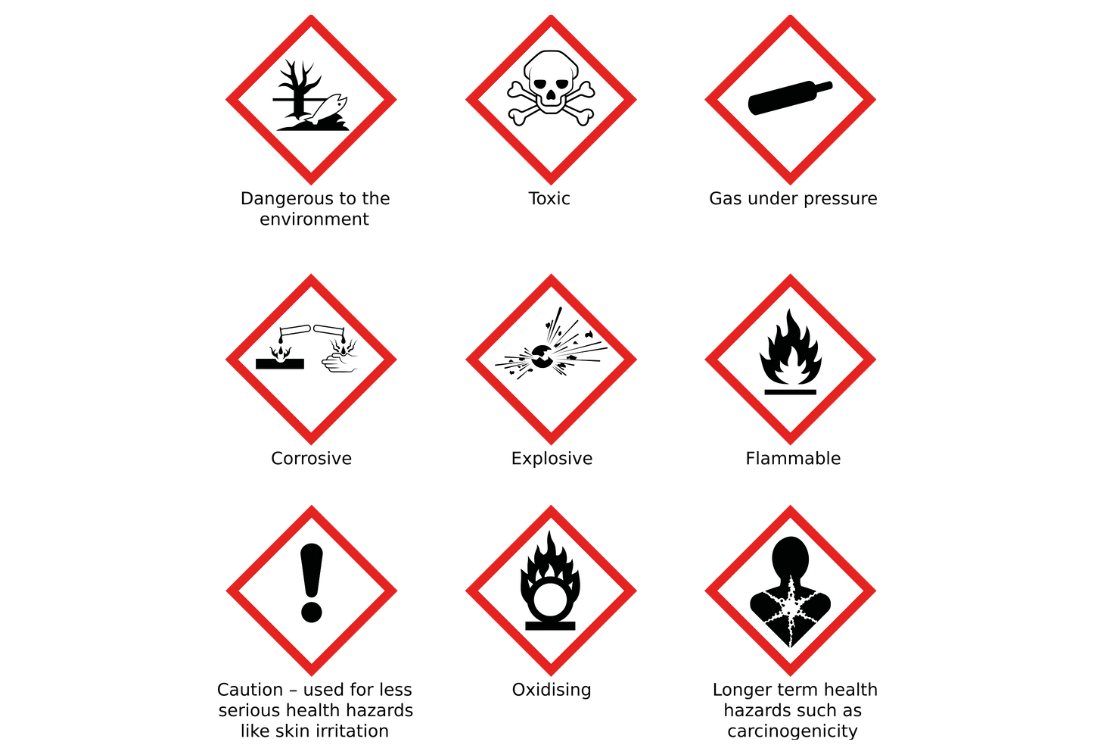Blog

UK Regulation: Understanding Chemical Product Labelling Requirements
Adhering to chemical product labelling regulations isn’t just a legal requirement, it’s a commitment to consumer safety and brand integrity. At Assured Solutions, it’s something that we take seriously with every cleaning product we produce.
As a white-label manufacturer, we also appreciate that it can be like navigating a maze trying to understand all the requirements for you to remain compliant. Our chemists have many years of industry experience between them to make sure we meet all UK labelling regulations every time we produce products, making the entire process much easier for you.
Classification, Labelling, and Packaging
The UK government and the EU have put many regulations in place to oversee cleaning product labelling requirements. Called classification, labelling, and packaging (CLP), they regulate the labelling of cleaning products to meet international standards. This ensures all hazardous chemicals are correctly identified and the users are informed of any potential risks.
There are several things a supplier or producer is required to do by law:
- Identification of hazardous chemicals – if a product is deemed hazardous it must contain appropriate information on usage, what to do if something goes wrong and symbols to highlight the dangers and practices to avoid.
- Hazardous statements – Such a statement would warn the user of the nature of the hazard in the mixture.
- Precautionary statements - These provide information on what to do to prevent exposure and minimise adverse effects e.g., eye protection, wearing gloves, etc.
- Signal words – Certain words such as “danger” or “warning” must be used if the hazards in the product are serious.
Specific Cleaning Labelling Requirements
Cleaning products must contain information to identify them. These include the ingredients list, hazard symbols, allergen information, usage instructions, storage and disposal instructions, batch number, quantity information, environmental credentials of the manufacturer, and safety data sheets.
More specifically, many common janitorial and sanitation products will require colour-coded chemical identification labels to be included on the packaging. These pictograms are used to communicate information about the hazards of a particular chemical. For example, a black skull and crossbones in a red diamond shape indicate extreme toxicity while test tubes pouring onto a hand can indicate it’s corrosive. These are part of a globally recognised system of classification called GHS Labelling Regulations – Globally Harmonised System of Classification and Labelling.
The Need For Meticulous Labelling
As we’ve said it’s not just a legal requirement it’s essential for any responsible cleaning manufacturer to label their products correctly to protect the end user. Ensuring your products are meeting the regulations requires meticulous attention to detail and staying up to date with ever-changing regulatory standards.
As a white-label supplier, we are highly experienced in the intricacies of label requirements for cleaning products and will ensure any products we produce for you meet all legal definitions. Not only do we ensure legal compliance, but we also make sure all communication is transparent, easy to understand, and environmentally responsible.
We keep up to date with legislation and all HSE regulations whilst also ensuring immediate implementation if any changes are made.
If you want to know more about our products get in touch.


